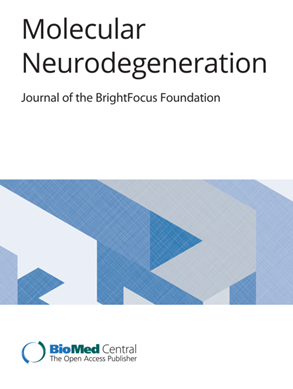Mouse models of Anti-Aβ immunotherapies
IF 17.5
1区 医学
Q1 NEUROSCIENCES
引用次数: 0
Abstract
The development of anti-amyloid-beta (Aβ) immunotherapies as the first disease modifying therapy for Alzheimer’s Disease (AD) is a breakthrough of basic research and translational science. Genetically modified mouse models developed to study AD neuropathology and physiology were used for the discovery of Aβ immunotherapies and helped ultimately propel therapies to FDA approval. Nonetheless, the combination of modest efficacy and significant rates of an adverse side effect (amyloid related imaging abnormalities, ARIA), has prompted reverse translational research in these same mouse models to better understand the mechanism of the therapies. This review considers the use of these mouse models in understanding the mechanisms of Aβ clearance, cerebral amyloid angiopathy (CAA), blood brain barrier breakdown, neuroinflammation, and neuronal dysfunction in response to Aβ immunotherapy.抗a β免疫治疗小鼠模型
抗淀粉样蛋白- β (a β)免疫疗法的发展作为阿尔茨海默病(AD)的第一个疾病修饰疗法是基础研究和转化科学的突破。用于研究阿尔茨海默病神经病理学和生理学的转基因小鼠模型被用于发现Aβ免疫疗法,并最终帮助推动疗法获得FDA的批准。尽管如此,适度的疗效和显著的不良副作用(淀粉样蛋白相关成像异常,ARIA)的结合,促使在这些相同的小鼠模型中进行反向转化研究,以更好地了解治疗的机制。这篇综述考虑了使用这些小鼠模型来理解Aβ清除、脑淀粉样血管病(CAA)、血脑屏障破坏、神经炎症和神经元功能障碍对Aβ免疫治疗的反应机制。
本文章由计算机程序翻译,如有差异,请以英文原文为准。
求助全文
约1分钟内获得全文
求助全文
来源期刊

Molecular Neurodegeneration
医学-神经科学
CiteScore
23.00
自引率
4.60%
发文量
78
审稿时长
6-12 weeks
期刊介绍:
Molecular Neurodegeneration, an open-access, peer-reviewed journal, comprehensively covers neurodegeneration research at the molecular and cellular levels.
Neurodegenerative diseases, such as Alzheimer's, Parkinson's, Huntington's, and prion diseases, fall under its purview. These disorders, often linked to advanced aging and characterized by varying degrees of dementia, pose a significant public health concern with the growing aging population. Recent strides in understanding the molecular and cellular mechanisms of these neurodegenerative disorders offer valuable insights into their pathogenesis.
 求助内容:
求助内容: 应助结果提醒方式:
应助结果提醒方式:


